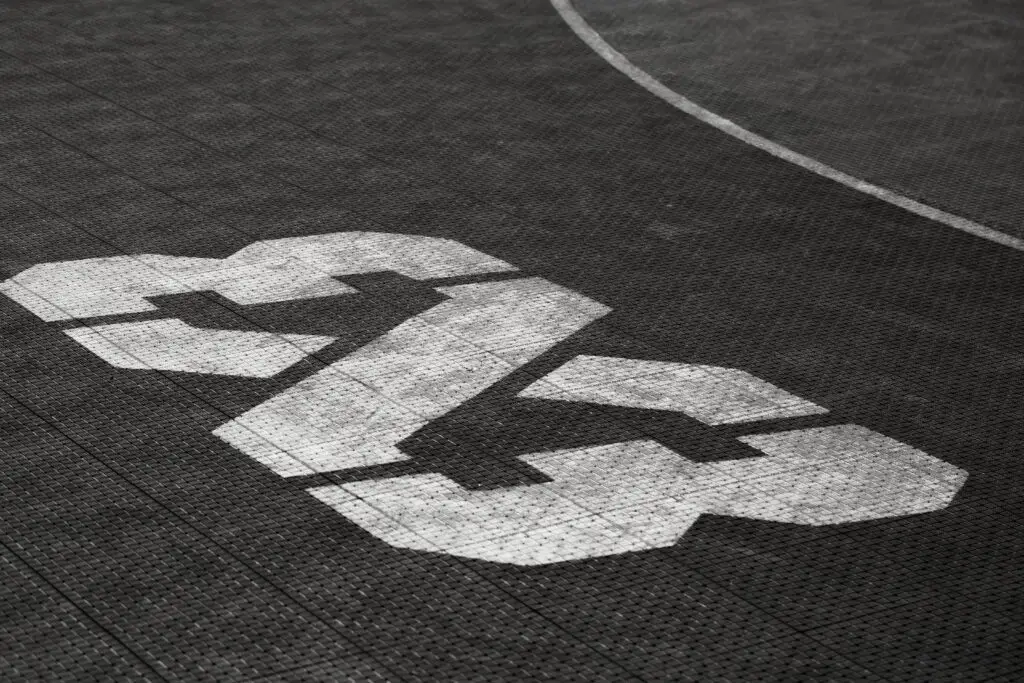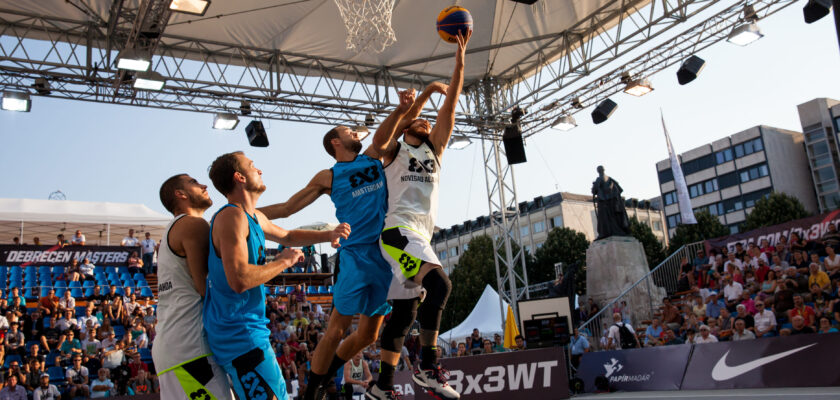Recognized as the world’s leading urban sport, 3×3 basketball has its origins in street basketball – a creative and informal version of the traditional game. Evolving from the street courts to the Olympic Games, 3×3 basketball was gradually structured by the International Basketball Federation (FIBA), which oversees the development of this sport. Keep reading and learn all about 3×3 Basketball now!

Open your Betano account and get up to 1,000 reais in bonuses.
Payments via PIX, live games and super odds!
Click here to open your account!
All about 3×3 Basketball: what is it?
Have you ever been in the situation of not having enough people to make up a full team? In 3v3 basketball, this problem is rare, as fewer players are needed than in traditional basketball.
Also, the court is smaller and the rules are a little different.
For example, instead of the traditional 48 minutes (NBA) or 40 minutes (FIBA), a 3×3 basketball game lasts just 10 minutes.
With an area just under half the size of a conventional court and only one basket, the game is more dynamic, requiring quick passes, skillful dribbling and incredible moves to win.
That’s why this sport has been so successful and continues to grow. According to FIBA, more than 250 million people play 3×3 basketball on courts around the world.
Keep reading to find out all about 3×3 Basketball!
All about 3×3 Basketball: history of the sport
Originating in the streets, 3×3 basketball emerged in the 1980s and quickly gained popularity in the United States. Its roots lie in streetball, a “street basketball” widely practiced on community courts both in the US and around the world, on an amateur basis.
For this reason, the two are visually very similar, with an urban, informal style that is strongly linked to the hip hop movement, attracting a young audience in particular.
One of the oldest and most renowned tournaments is the Gus Macker 3-on-3 Basketball, which gained notoriety in 1987. Another important tournament is Hoop It Up: 3×3 Basketball, which has been held for over 30 years.
Over time, the sport has gained more and more fans and, with this growth, FIBA saw the need to get involved.
Thus, in 2007, FIBA carried out the first test at the Asian Indoor Games in Macau, China, and in 2010, it took the novelty to the Youth Olympic Games in Singapore.
That was just the beginning, because in 2011 the FIBA 3×3 World Tour was created, which is still running today. And in 2012 the first World Cup took place in Athens, Greece.
Continue reading to find out all about 3×3 Basketball!
3×3 Basketball at the Olympics
3×3 basketball was included in the program of the Youth Olympic Games in Singapore 2010. Subsequently, it was also present at the Nanjing 2014 and Buenos Aires 2018 editions.
Due to the enormous success of this sport among young people, the IOC announced in 2017 the inclusion of 3×3 basketball in the program of the Tokyo 2020 Olympic Games, where the first Olympic medals for men’s and women’s 3×3 teams were distributed.
This youthful, dynamic, spectacular and urban variation of basketball is sure to delight Olympic fans once again in Paris 2024!
Read on to find out all about 3×3 basketball!
All about 3×3 Basketball: rules of the game
As we’ve already mentioned, 3×3 basketball is a variation on traditional basketball. Instead of 5 against 5 on the court, it’s 3 against 3, with a reserve for each team.
The court is a little smaller, being half of a traditional court, 15 meters wide and 11 meters long, with only one basket.
A big difference is in the scoring. Shots inside the arc are worth 1 point, while those from outside the arc are worth 2 points. Free throws, on the other hand, are worth 1 point.
The match only lasts 10 minutes, but can end earlier if one team reaches 21 points first. In the event of a draw at the end of time, the team that scores two points first in extra time wins.
Continue reading to find out all about 3×3 Basketball!
In addition, the ball is slightly smaller than the traditional one and possession lasts only 12 seconds, instead of the 24 seconds of traditional basketball.
Unlike conventional basketball, there is no limit on individual fouls, but up to 6 collective fouls are allowed. The 7th, 8th and 9th collective fouls give the opponent two free throws and, from the 10th foul onwards, the opponent also gains possession of the ball.
Each team is allowed one technical time-out and substitutions are made on the back line, with the players touching hands.
A specific rule of 3×3 is that when the defense recovers the ball through a rebound, steal or block, they must leave the hoop before shooting. The same applies when the team suffers a basket, needing to leave the hoop after receiving possession.
Read on to find out all about 3×3 basketball!
All about 3×3 Basketball: differences to traditional Basketball
To conclude this “All about 3×3 basketball” guide, how about we highlight the differences in rules between street and traditional basketball? We’ll base ourselves on the official FIBA regulations, not the NBA ones;
| Basquete 3×3 | Basquete tradicional |
| 15×11 meter court | 28×15 meter court |
| 1 quarter of 10 minutes | 4 quarters of 10 minutes |
| 3 starters in each team | 5 starters in each team |
| 12 seconds to shoot | 24 seconds to shoot |
| There is no limit on individual fouls | Limit of 5 per player |
| 1 technical timeouts for each team | 5 technical timeouts for each team |
| In extra time, whoever scores 2 points first wins | Extra time has a duration of 5 minutes |
| Hoops are worth 1 to 2 points | Hoops are worth between 1 and 3 points |
Continue lendo para saber tudo sobre Basquete 3×3!
All about 3×3 Basketball: list of the latest men’s champion countries
- 2012 – Serbia
- 2014 – Qatar
- 2016 – Serbia
- 2017 – Serbia
- 2018 – Serbia
- 2019 – United States
- 2022 – Serbia
- 2023 – Serbia
Keep reading to find out all about 3×3 Basketball!
All about 3×3 Basketball: list of the latest women’s champion countries
- 2012 – United States
- 2014 – United States
- 2016 – Czech Republic
- 2017 – Russia
- 2018 – Italy
- 2019 – China
- 2022 – France
- 2023 – United States
Did you know all about 3×3 basketball? If you enjoyed this text, then take a look at:



